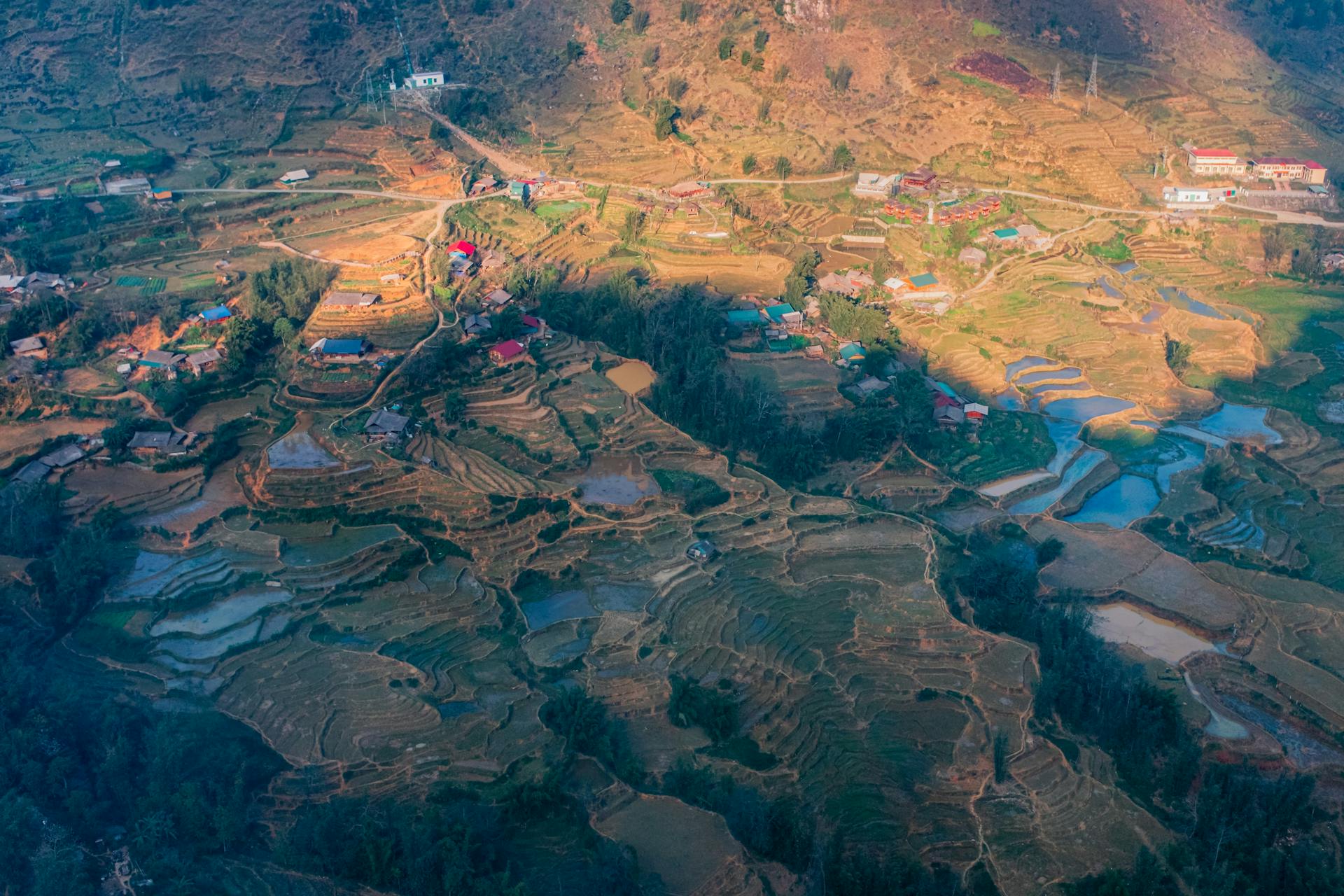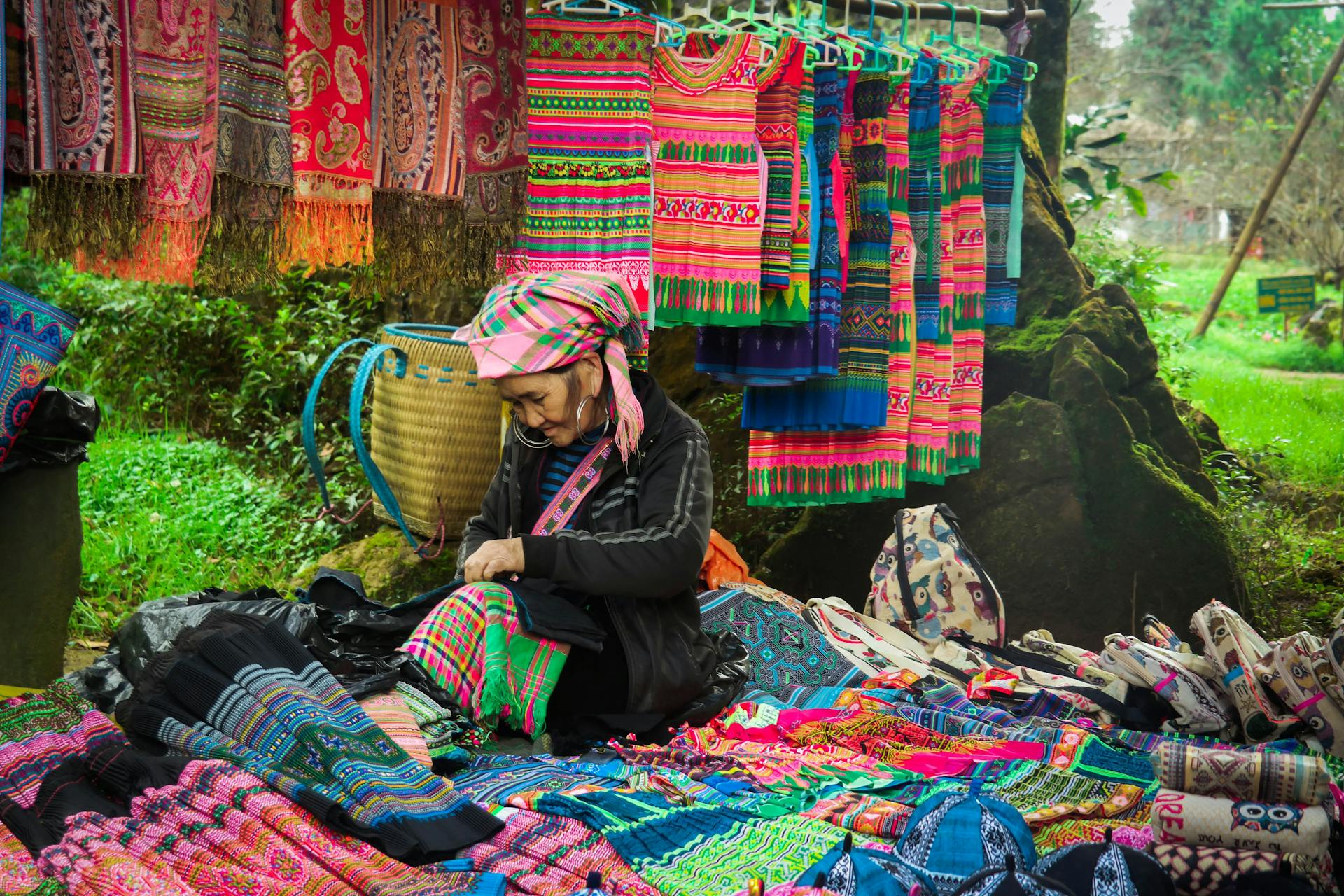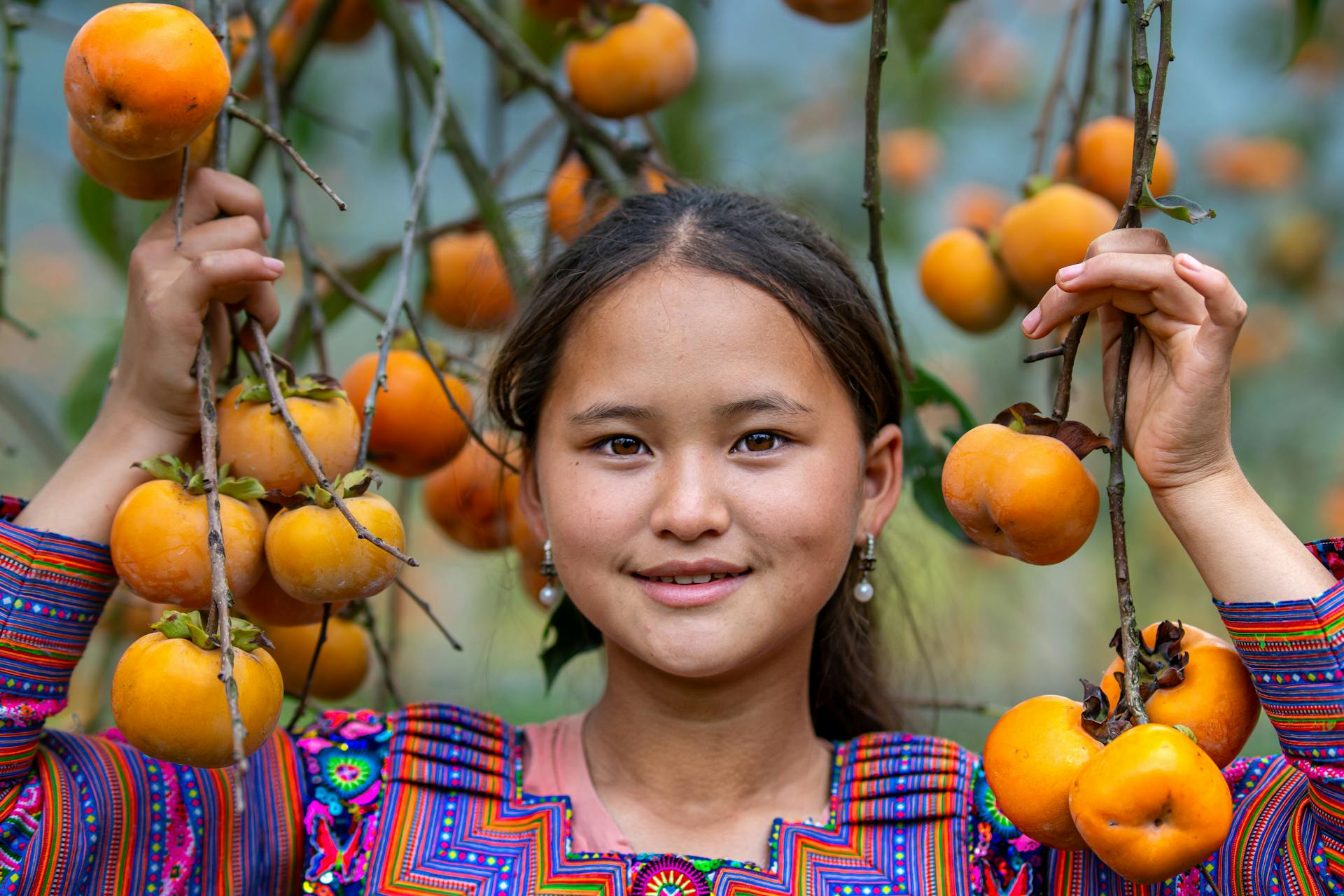Plan your Ta Van trip with our 2025 weather guide! Learn about seasonal conditions in this Sa Pa village, packing tips, eco-friendly Ta Van Tours, and top providers for a seamless adventure with Ta Van Travel. Start your journey today!
Author Bio: Written by Tony Bùi, with over 20 years of experience in the travel industry, personally guiding and organizing tours for over 100,000 travellers across Southeast Asia. This guide draws from firsthand insights, guest feedback from Legend Travel Group surveys, and official sources like weatherspark.com, accuweather.com, topasecolodge.com, izitour.com, and culturetrip.com. Weather forecasts based on historical patterns and latest data as of August 22, 2025; verify before travel. Reflects Vietnam’s updated travel regulations.
Ta Van, a picturesque village in Sa Pa, northern Vietnam, is nestled in the Muong Hoa Valley, 10 km from Sa Pa town, surrounded by terraced rice fields and home to the Giay and Hmong ethnic communities izitour.com. Known for its serene landscapes, traditional homestays, and cultural festivals like the "Down the Field" festival, Ta Van is a haven for trekkers and culture enthusiasts. Whether joining guided Ta Van Tours or exploring independently, understanding Ta Van’s weather is crucial for planning activities like trekking, homestay experiences, or visiting local markets. Ta Van’s temperate, high-altitude climate (1,200–1,500 meters) features four distinct seasons: spring (March–May), summer (June–August), autumn (September–November), and winter (December–February), with temperatures ranging from -3°C to 29°C and frequent fog weatherspark.com. This guide provides weather-based travel tips, cultural insights, and eco-friendly Ta Van Travel options to ensure a seamless and culturally respectful journey.
Following Vietnam’s updated travel regulations in 2025, Ta Van is accessible via bus or taxi from Hanoi to Sa Pa, followed by local transport to the village, making weather planning vital for a comfortable visit. This guide blends seasonal advice, packing tips, and sustainable Ta Van Travel ideas for a worry-free experience.
Ta Van’s weather features a spring and autumn (March–May, September–November, 15–24°C, low rain) ideal for trekking and cultural visits, a summer (June–August, 20–29°C, high rain) suited for short outdoor activities, and a winter (December–February, -3–14°C, occasional snow) perfect for serene homestays. Most nationalities require a Vietnam visa (visa on arrival $25; e-visa $25). Tours cost $15–$80 (375,000–2,000,000 VND), and local purchases range from $0.20–$10 (5,000–250,000 VND). Key sites are accessible by foot, bicycle, or taxi from Sa Pa town. Verify weather forecasts and visa requirements via vietnam.travel or accuweather.com.
 Immerse in Ta Van’s golden harvest in autumn (Source: Internet)
Immerse in Ta Van’s golden harvest in autumn (Source: Internet)Spring (March–May):
Temperature: 10–20°C; warms to 24°C by May weatherspark.com.
Conditions: Mild with blooming flowers, moderate humidity (60–75%), and occasional showers (5–10 rainy days/month, 20–100 mm/month) accuweather.com. Ideal for trekking to Ta Van Village and exploring rice terraces.
Precipitation: Light to moderate, 0.5–5 mm/day; fog common in March topasecolodge.com.
UV Index: Moderate to high (5–8); use sunscreen ($1 or 25,000 VND).
Conditions for Visiting: Perfect for trekking, cultural festivals like the "Down the Field" festival, and homestay experiences; vibrant landscapes with cherry blossoms izitour.com.
Summer (June–August):
Temperature: 20–29°C; warmest in July (up to 29°C, heat index ~32°C) weatherspark.com.
Conditions: Warm, humid (75–85%), with frequent rain (15–24 rainy days/month, 100–300 mm/month); lush rice terraces and waterfalls accuweather.com. Suitable for short morning treks or indoor visits to local homes.
Precipitation: Moderate to heavy, 5–15 mm/day; peaks in August topasecolodge.com.
UV Index: Moderate (4–7); rain gear essential.
Conditions for Visiting: Ideal for early morning treks or canal-side visits; slippery trails require caution; fewer crowds localvietnam.com.
Autumn (September–November):
Temperature: 15–24°C; cools to 15°C by November weatherspark.com.
Conditions: Mild, dry, with clear skies and vibrant golden rice terraces (60–75% humidity, 5–10 rainy days/month, 50–150 mm/month) accuweather.com. Perfect for trekking, photography, and cultural immersion.
Precipitation: Light to moderate, 1–8 mm/day; driest in November topasecolodge.com.
UV Index: High (6–9); sun protection recommended.
Conditions for Visiting: Optimal for trekking to Ta Van Village and visiting rice fields; harvest season in September–October izitour.com.
Winter (December–February):
Temperature: -3–14°C; coldest in December–January (lows near -3°C) weatherspark.com.
Conditions: Cold, dry, with frequent fog (137 foggy days/year) and occasional snow (1–3 days in December–January); low humidity (50–65%) topasecolodge.com. Ideal for cozy homestays and cultural experiences like the Sapa Winter Festival.
Precipitation: Low, 0–3 mm/day; 3–5 rainy days/month accuweather.com.
UV Index: Low to moderate (3–5); warm clothing essential.
Conditions for Visiting: Best for serene homestays and cultural visits; snow possible, adding scenic beauty; cold trails require sturdy shoes izitour.com.
Outdoor Activities: Spring and autumn are best for trekking and cultural visits; summer suits short morning treks; winter ideal for indoor homestays and cozy festivals weatherspark.com.
Festivals: Tet (January–February) enjoys mild, dry weather; "Down the Field" festival (spring) benefits from blooming landscapes; wet season suits indoor cultural activities izitour.com.
Health: Summer’s humidity increases mosquito activity; use repellent ($1 or 25,000 VND). Winter’s cold requires warm layers to avoid chills travel.state.gov.
Tip: Check daily forecasts via accuweather.com or weatherspark.com 1–2 weeks before travel; pack for seasonal conditions.
Cultural etiquette ensures a respectful experience during Ta Van Tours, especially when adapting to weather conditions. Here’s your guide, based on current norms as of August 22, 2025:
Greetings: Offer a “xin chào” (hello) with a slight nod; use both hands when paying for homestays or donations to show respect, especially in wet weather when handling damp items.
Dress: Wear modest clothing covering shoulders and knees for visits to local homes or cultural sites; a lightweight scarf ($1 or 25,000 VND) aligns with Giay and Hmong norms culturetrip.com. In winter, pack warm layers ($5–$10 or 125,000–250,000 VND); in summer, bring quick-dry clothing and a raincoat ($2 or 50,000 VND).
Behaviour: Maintain a calm demeanor in homestays and markets; ask permission before photographing locals, especially Hmong or Giay artisans; avoid loud behavior in cultural spaces. A guest shared: “Respecting ethnic customs made our rainy treks in Ta Van unforgettable.”
Customs: Entry to cultural sites is often free; donations ($0.20–$0.50 or 5,000–12,500 VND) are appreciated; avoid littering to preserve rice terraces; tipping guides ($0.20–$1 or 5,000–25,000 VND) is appreciated but not mandatory. Avoid public criticism of the government to prevent issues.
Tip: Say “cảm ơn” (thank you) to locals or guides; use eco-friendly practices like reusable water bottles ($2 or 50,000 VND) to support sustainable Ta Van Travel; carry rain gear in summer or warm layers in winter. Tony Bùi notes: “In 20 years guiding, I’ve seen weather-prepared travellers thrive in Ta Van’s vibrant culture.”
General Tips:
Language: Carry a phrase card ($1 or 25,000 VND) for Vietnamese basics like “cảm ơn”; English is limited in Ta Van culturetrip.com.
Respect: Follow homestay rules (remove shoes, respect communal spaces); avoid drugs (severe penalties apply); support local artisans with fair purchases.
Navigation: Use offline maps (Maps.me) with “Ta Van” or “Muong Hoa Valley” for navigation, especially in foggy winter conditions.
Eco-Tip: Opt for bicycles ($1–$2/day or 25,000–50,000 VND) or walking to reduce emissions, aligning with Vietnam’s green tourism goals.
 Photograph the festive spirit of Ta Van’s culture (Source: Internet)
Photograph the festive spirit of Ta Van’s culture (Source: Internet)Below is a curated list of tour options tailored to Ta Van’s weather, based on latest data from izitour.com, localvietnam.com, and topasecolodge.com. Confirm schedules and prices before booking.
Details: Trek to Ta Van Village, visit local homestays, or explore Muong Hoa Valley independently; adapt to spring/autumn (trekking), summer (short treks), or winter (homestays); suitable for prepared travellers; low to moderate difficulty.
Weather Tips: Trek in spring/autumn for clear trails; focus on short morning treks in summer with rain gear; prioritize homestays in winter with warm clothing.
Schedule: Daily; homestays available year-round; Muong Hoa Valley best in autumn for rice terraces; vibrant during Tet (January–February).
Cost: Homestay: $5–$15/night (125,000–375,000 VND); transport (bicycle: $1–$2/day or 25,000–50,000 VND; taxi from Sa Pa: $5–$10 or 125,000–250,000 VND); market purchases: $0.20–$10 (5,000–250,000 VND).
Location: Ta Van Village, Muong Hoa Valley, Sa Pa, Lao Cai Province.
Eco-Friendly Note: Walk or use bicycles to reduce emissions; avoid littering in rice terraces.
Tip: Check forecasts at accuweather.com; trek early in summer to avoid rain; a guest noted: “Self-guided treks were seamless with weather planning.”
Details: 1-day group tour trekking to Ta Van Village and visiting local markets; includes English-speaking guide, transport from Sa Pa, lunch, and entry fees; low difficulty.
Weather Tips: Outdoor treks in spring/autumn; early morning focus in summer with rain gear; cultural visits in winter with warm layers.
Schedule: Daily; departs 8:00 AM from Sa Pa hotels; returns by 4:00 PM.
Cost: $25–$40/person (625,000–1,000,000 VND, includes entries).
Pick-up/Drop-off: Hotels in Sa Pa.
Eco-Friendly Note: Group transport with fuel-efficient vehicles minimizes impact; supports local communities.
Tip: Book via legendtravelgroup.com; a guest noted: “Legend’s tour adapted perfectly to foggy winter conditions.”
Details: 1-day guided tour trekking to Ta Van Village and visiting homestays; includes English-speaking guide, transport from Sa Pa, lunch, and entry fees; low to moderate difficulty.
Weather Tips: Best in spring/autumn for clear trails; early morning treks in summer with rain gear; homestay focus in winter with warm clothing.
Schedule: Daily; departs 7:30 AM from Sa Pa hotels; returns by 4:00 PM.
Cost: $30–$50/person (750,000–1,250,000 VND, includes entries).
Pick-up/Drop-off: Hotels or designated points in Sa Pa.
Eco-Friendly Note: Small groups reduce environmental impact; supports local communities.
Tip: Book via localvietnam.com; a guest noted: “The combo tour was ideal for sunny or rainy days.”
Details: 2–3 day tour combining Ta Van Village treks, homestays, and visits to Muong Hoa Valley; includes English-speaking guide, transport, accommodation, meals, and entry fees; low to moderate difficulty.
Weather Tips: Focus on trekking in spring/autumn; early morning or covered activities in summer; homestays and cultural visits in winter; guides adjust itineraries for weather.
Schedule: Daily; departs from Sa Pa hotels; returns after 2–3 days.
Cost: $80–$200/person (2,000,000–5,000,000 VND, includes entries).
Pick-up/Drop-off: Hotels or custom locations in Sa Pa.
Eco-Friendly Note: Uses eco-lodges and fuel-efficient transport; supports local communities.
Tip: Book Ta Van Tours via legendtravelgroup.com or WhatsApp (+84 825862222); a guest noted: “The multi-day tour was a weather-smart cultural journey.”
Self-Guided Exploration: Flexible and cost-effective, ideal for weather-prepared independent travellers.
Group Cultural Tours: Affordable and guided, perfect for weather-adapted cultural insights.
Combo Cultural and Trekking Tours: Blend cultural visits with weather considerations for a comprehensive experience.
Multi-Day Cultural Tours: Offer in-depth exploration with weather-smart itineraries.
Eco-Friendly Note: Group and multi-day tours use fuel-efficient transport or walking, supporting Vietnam’s green tourism goals.
 Experience Ta Van’s culture with weather-smart tours (Source: Internet)
Experience Ta Van’s culture with weather-smart tours (Source: Internet)Key weather-based travel opportunities include:
Tet (Vietnamese Lunar New Year): Typically January–February, festive with mild, dry weather (10–14°C); check dates at vietnam.travel.
"Down the Field" Festival: Typically spring (March–May), vibrant with blooming landscapes; mild (10–20°C); check dates at izitour.com.
Rice Harvest Season: September–October, ideal for golden rice terraces; mild and dry (15–24°C) izitour.com.
Spring and autumn (March–May, September–November, 15–24°C) are ideal for trekking and cultural visits. Summer (June–August, 20–29°C) suits early morning treks with rain gear. Winter (December–February, -3–14°C) is best for cozy homestays and festivals. Sunrise visits (6:00 AM–8:00 AM) avoid heat or rain. Verify forecasts via accuweather.com.
Spring/Autumn (March–May, September–November): Pack lightweight, modest clothing; sunscreen ($1 or 25,000 VND); hat ($2 or 50,000 VND); trekking shoes ($5 or 125,000 VND).
Summer (June–August): Pack quick-dry clothing; raincoat or umbrella ($2 or 50,000 VND); waterproof shoes ($5 or 125,000 VND); mosquito repellent ($1 or 25,000 VND).
Winter (December–February): Pack warm layers ($5–$10 or 125,000–250,000 VND); scarf ($1 or 25,000 VND); insulated shoes ($5 or 125,000 VND); gloves ($1 or 25,000 VND).
Forecast Checks: Monitor daily forecasts 1–2 weeks before travel via accuweather.com or weatherspark.com; adjust plans for rain, fog, or cold.
Eco-Tip: Use reusable water bottles ($2 or 50,000 VND) and totes ($1 or 25,000 VND) to reduce waste; opt for walking or bicycles for eco-friendly travel.
Tip: Book tours with flexible itineraries; trek early in summer; pack warm layers for winter; carry small VND notes for purchases; confirm visa requirements ($25).
 Start your journey with Ta Van’s serene glow (Source: Internet)
Start your journey with Ta Van’s serene glow (Source: Internet)Pack for a comfortable, sustainable visit:
Documents: Passport (valid 6+ months), Vietnam visa ($25 or 625,000 VND), wallet ($2–$3 or 50,000–75,000 VND), tour bookings.
Clothing: Modest clothing covering shoulders and knees; scarf ($1 or 25,000 VND) for cultural visits; quick-dry clothing and raincoat ($2 or 50,000 VND) for summer; warm layers and gloves ($5–$10 or 125,000–250,000 VND) for winter; trekking shoes ($5 or 125,000 VND); hat ($2 or 50,000 VND).
Essentials: Reusable water bottle ($2 or 50,000 VND); snacks ($0.20–$1 or 5,000–25,000 VND, e.g., pho); small backpack ($2 or 50,000 VND); sunscreen ($1 or 25,000 VND); insect repellent ($1 or 25,000 VND).
Tech: Phone with translation apps (e.g., Google Translate); charger ($5–$10 or 125,000–250,000 VND); local SIM ($2–$3 or 50,000–75,000 VND); camera ($20 or 500,000 VND) for photos (with permission).
Eco Items: Reusable tote ($1 or 25,000 VND) for market purchases; phrase card ($1 or 25,000 VND) with Vietnamese basics.
Extras: Small VND notes for donations or purchases; small first aid kit ($2 or 50,000 VND); umbrella ($2 or 50,000 VND) for summer; money belt ($2 or 50,000 VND) for valuables. Tip: Pack light (1 small bag, max 5 kg); reusable items support sustainability.
Travel Tour Costs
Self-Guided Exploration: Homestay: $5–$15/night (125,000–375,000 VND); transport (bicycle: $1–$2/day or 25,000–50,000 VND; taxi from Sa Pa: $5–$10 or 125,000–250,000 VND).
Group Cultural Tours: $25–$40 (625,000–1,000,000 VND, includes entries).
Combo Cultural and Trekking Tours: $30–$50 (750,000–1,250,000 VND, includes entries).
Multi-Day Cultural Tours: $80–$200 (2,000,000–5,000,000 VND, includes entries). Weather-Related Costs
Raincoat or Umbrella: $2 (50,000 VND).
Sunscreen or Insect Repellent: $1 each (25,000 VND).
Warm Layers or Quick-Dry Clothing: $2–$10 (50,000–250,000 VND). Other Costs
Market Snacks (e.g., pho, Hmong handicrafts): $0.20–$1 (5,000–25,000 VND).
Souvenirs (e.g., Hmong textiles): $0.50–$10 (12,500–250,000 VND).
Donations: $0.20–$0.50 (5,000–12,500 VND). Total Daily Cost (Per Person)
Budget: $10–$30 (self-guided, snacks, transport).
Mid-range: $30–$60 (group tour, purchases).
Luxury: $60–$100 (private tour, premium souvenirs). Tip: Budget $10–$100 for tours, weather items, or transport, and $0.20–$10 for purchases or add-ons.
Weather Tips: Check forecasts 1–2 weeks before travel; trek at sunrise (6:00 AM) in spring/autumn; focus on early morning treks in summer with rain gear; prioritize homestays in winter with warm layers accuweather.com.
Etiquette: Use “xin chào” greeting; dress modestly for cultural visits; stay respectful in homestays; avoid touching sacred items.
Access: Choose self-guided treks for flexibility, group tours for weather-adapted insights, or multi-day tours for deeper exploration.
Schedules: Sites accessible year-round; book early for festivals (January–February, March–May); check advisories before travel.
Sustainability: Use bicycles or walk; carry reusable items; support local artisans with fair purchases.
Navigation: Use offline maps (Maps.me) with “Ta Van” or “Muong Hoa Valley.”
Safety Note: Secure valuables with a money belt ($2 or 50,000 VND); beware of slippery trails in summer; carry emergency numbers (Police: 113, Vietnam Embassy: +84 24 3938 0000).
Health Note: Use bottled water; apply mosquito repellent in summer; get vaccinated; avoid stray animals travel.state.gov.
What is the weather like in Ta Van? Spring/autumn (March–May, September–November, 15–24°C) are mild and dry; summer (June–August, 20–29°C) is warm and rainy; winter (December–February, -3–14°C) is cold with occasional snow weatherspark.com.
When is the best time to visit Ta Van? Spring and autumn for trekking; winter for homestays; summer for short morning visits izitour.com.
How do I prepare for Ta Van’s wet season? Pack raincoat, umbrella, quick-dry clothing, and waterproof shoes; focus on early morning visits accuweather.com.
Is Ta Van’s weather safe for travel? Yes, but wet season brings slippery trails and fog; winter requires warm clothing; check forecasts via accuweather.com topasecolodge.com.
How do I check Ta Van’s weather? Use accuweather.com or weatherspark.com for daily forecasts.
Are eco-friendly tours available? Yes, group tours with fuel-efficient transport or walking tours; check localvietnam.com.
Enhance your weather-prepared Ta Van journey with eco-conscious tours from Legend Travel Group:
Ta Van Cultural Eco-Tour ($25–$40/person, 1 day): Guided trek and market visit with weather-adapted plans, using sustainable practices.
Ta Van Heritage Trail ($80–$150/person, 2 days): Explore cultural sites with eco-friendly transport.
Vietnam Northern Explorer ($150–$250/person, 3 days): Multi-site adventure with eco-lodges and community-focused activities. Prices include guides, transport, and fees; group discounts available. Explore options at legendtravelgroup.com or contact sales@legendtravelgroup.com / WhatsApp (+84825862222) for your Ta Van Travel plans.
Understanding Ta Van Weather with cultural etiquette—modest attire, polite greetings like “xin chào,” and weather-smart planning—unlocks a vibrant, cultural journey through this Sa Pa village. With tour costs from $15–$80, eco-friendly Ta Van Tours, and attractions like Ta Van Village and Muong Hoa Valley, this trip offers comfort and sustainability. Whether choosing a self-guided or guided experience with Ta Van Travel, check forecasts via accuweather.com and respect local customs for the best experience. Safe travels!
Sources:
Weather Information: weatherspark.com, accuweather.com, topasecolodge.com
Cultural Norms: culturetrip.com
Travel Details: izitour.com, localvietnam.com
Favorite experiences booked by travelers